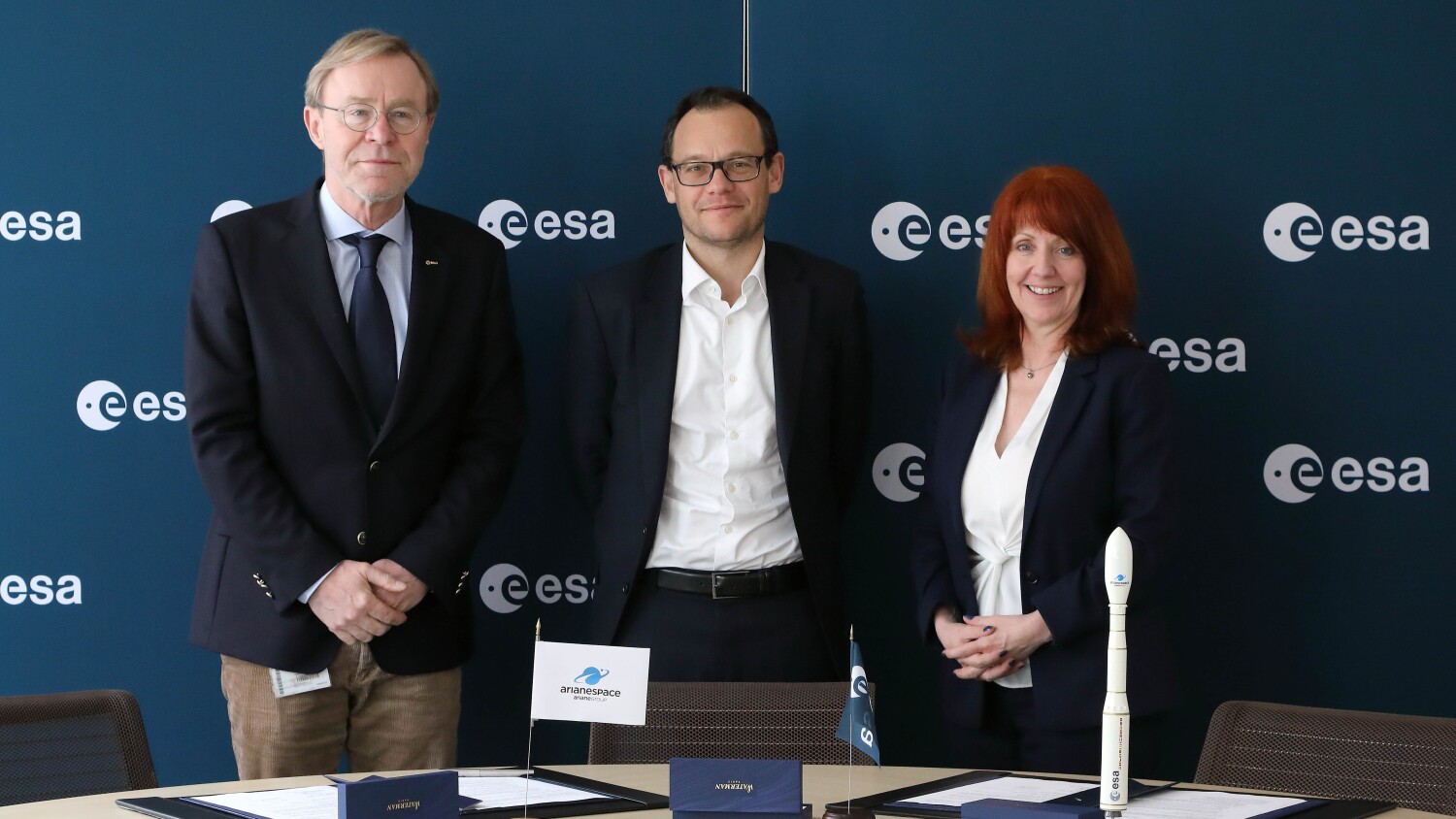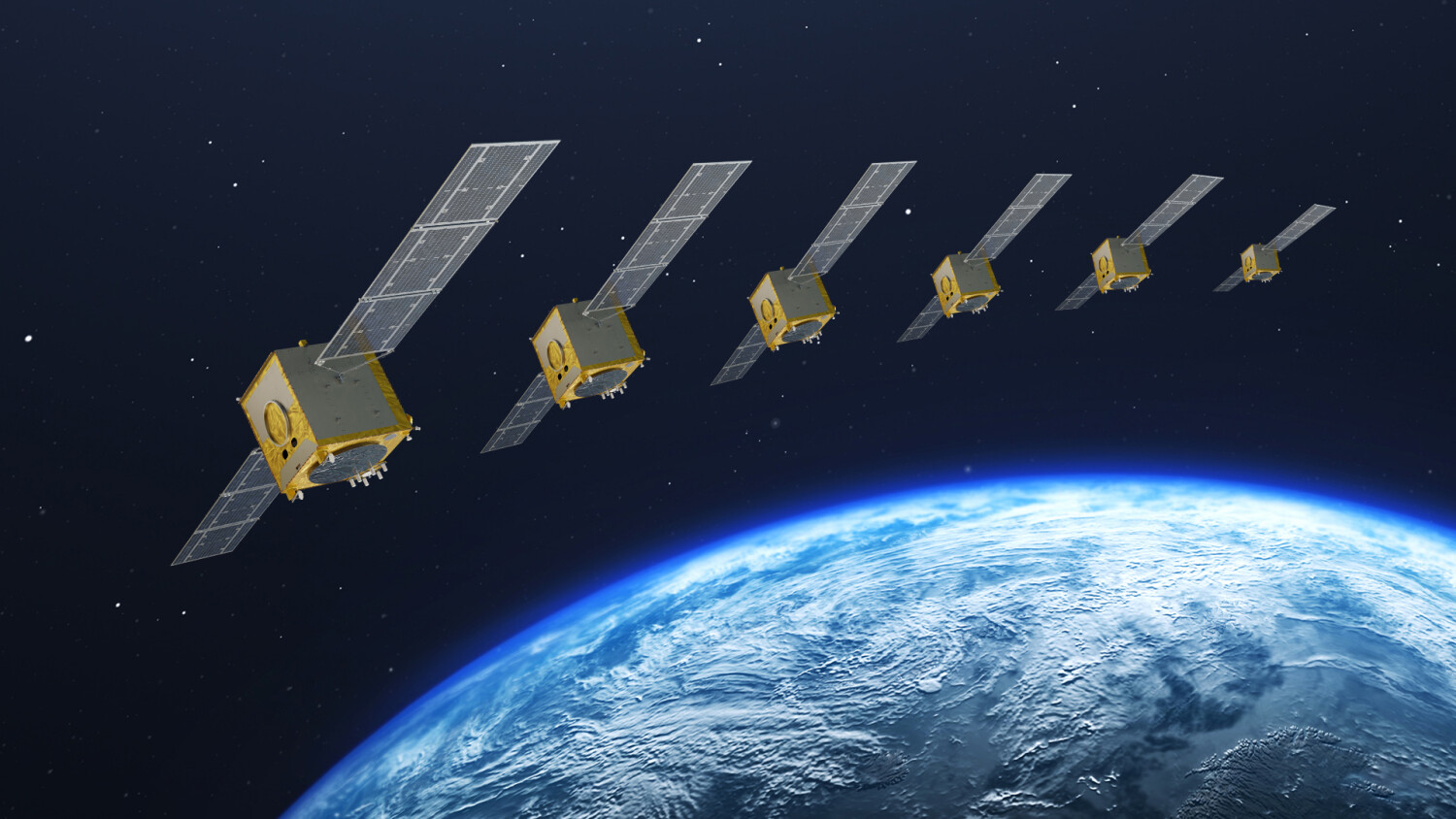On Friday evening, December 21, Arianespace boosted two communications satellites into geostationary transfer orbit (GTO): RASCOM-QAF1, built by Thales Alenia Space for pan-African operator RASCOMSTAR-QAF, and Horizons-2, built by Orbital Sciences Corporation for the operator Horizons 2 Satellite LLC, a joint venture of Intelsat and JSAT.
36th Ariane 5 launch, 22nd success in a row
The latest successful launch of an Ariane 5, its sixth in 2007, confirms that Arianespace’s launch Service & Solutions continues to set the standard for all telecom operators worldwide.
Ariane 5 is the only commercial launcher in service today capable of simultaneously launching two payloads, and gives Arianespace customers unrivaled performance, flexibility and competitiveness.
In 2007, Ariane 5 missions performed by Arianespace orbited 12 of the 15 commercial communications satellites that were successfully launched into geostationary orbit. Starsem, an Arianespace subsidiary, carried out three Soyuz launches from the Baikonur Cosmodrome, orbiting eight satellites for the Globalstar constellation and RADARSAT-2 for the Canadian Space Agency.
A new customer joins the Arianespace roster
Arianespace is particularly proud of launching the first pan-African satellite, RASCOM-QAF1. Operator RASCOMSTAR-QAF will use this satellite to offer a broad array of dedicated communications services to all of Africa, on behalf of the inter-governmental organization RASCOM, grouping 46 African countries.
Long-standing customers
Arianespace has established a long-standing relationship of mutual confidence with this mission’s customers: Thales Alenia Space, Intelsat and Japanese operator JSAT Corporation. Arianespace has launched approximately two-thirds of Thales Alenia Space’s satellites, along with 48 satellites for Intelsat since 1983, and seven satellites for JSAT since 1989.
Record order book
Since the beginning of the year, Arianespace has signed 13 new Service & Solutions contracts for launches into geostationary transfer orbit, along with four contracts for low Earth orbit (LEO) launches. Following this launch, Arianespace still holds a record backlog of orders:
- 24 satellites to be launched into GTO, using Ariane 5 and possibly Soyuz for the smaller payloads.
- 11 government launches using Ariane 5, including 9 to launch the ATV cargo spacecraft to the International Space Station.
- 8 Soyuz launches (2 in Baikonur via Starsem, 6 from the Guiana Space Center).
RASCOM-QAF1/Horizons-2 mission at a glance
The mission was carried out by an Ariane 5 GS launcher from Europe’s Spaceport in Kourou, French Guiana. Liftoff was on Friday, December 21, at 6:42 pm local time in Kourou (21:42 UT, 10:42 pm in Paris, 4:42 pm in Washington, DC, and on Saturday, December 22 at 6:42 am in Tokyo).
Provisional parameters at injection of the storable-propellant upper stage (EPS) were:
Perigee: 585.2 km for a target of 584.8 km (±4)
Apogee: 35,874 km for a target of 35,865 km (±240)
Inclination: 5.49 degrees for a target of 5.50 degrees (±0.06°)
Built by Thales Alenia Space under a turnkey contract from RASCOMSTAR-QAF, the RASCOM-QAF1 satellite has a design life of 15 years. It will provide telecommunications services to rural areas in Africa, as well as intercity and international phone links, direct TV broadcast and Internet access services. Based on a Spacebus 4000B3 platform, this powerful spacecraft carries 12 Ku-band transponders and eight C-band transponders. It weighed about 3,200 kg at launch and offers 6.4 kW of power. The satellite will be positioned at 2.85 degrees East.
Weighing approximately 2,300 kg at liftoff, the Horizons-2 satellite was built by Orbital Sciences using a STAR platform. It carries 20 high-power Ku-band transponders and will generate 3.5 kW of power. From its geostationary orbit, Horizons-2 will provide occasional use video and IP-based content distribution for the continental United States, the Caribbean and parts of Canada. Likewise, Horizons-2 will support a number of comms-on-the-move applications for government customers. Its unique boomerang beam will support littoral water operations off the U.S. eastern seaboard for homeland security, ship-to-shore communications and cargo tracking. Horizons-2, which has a 15-year design life, will occupy Intelsat’s orbital slot at 74 degrees West.







